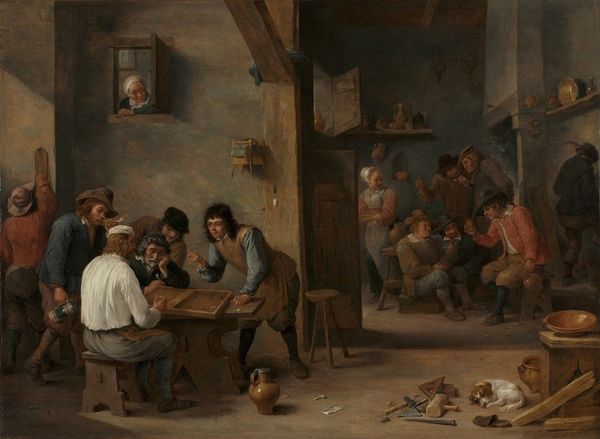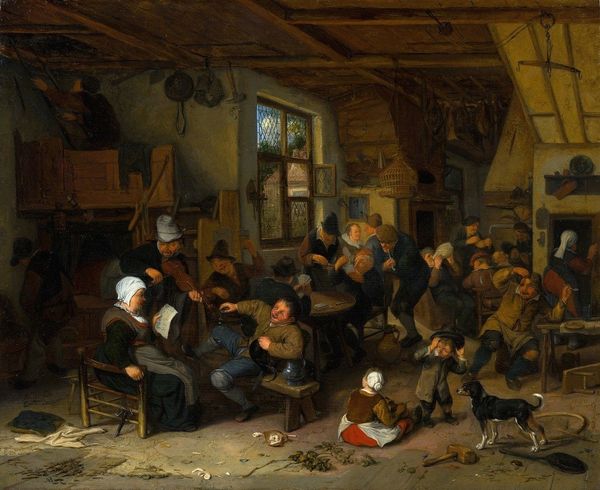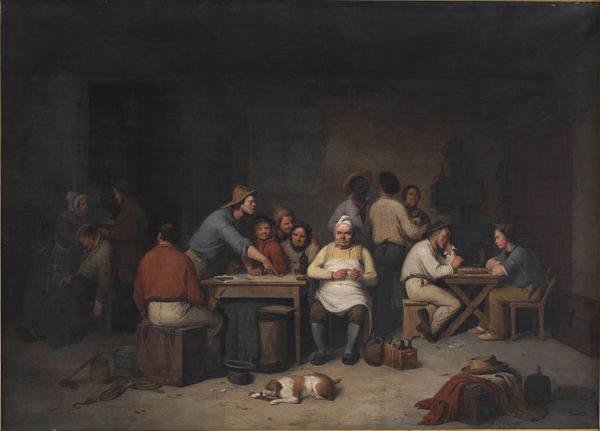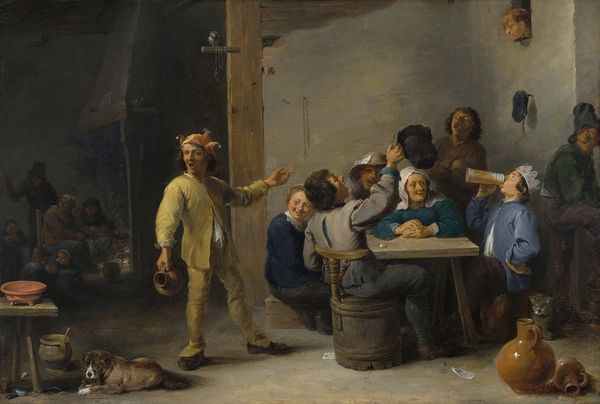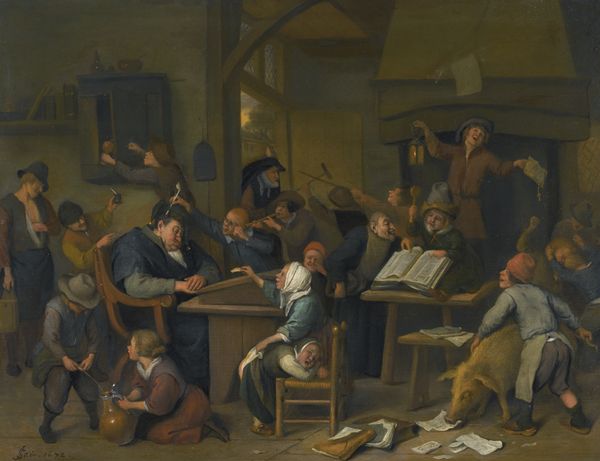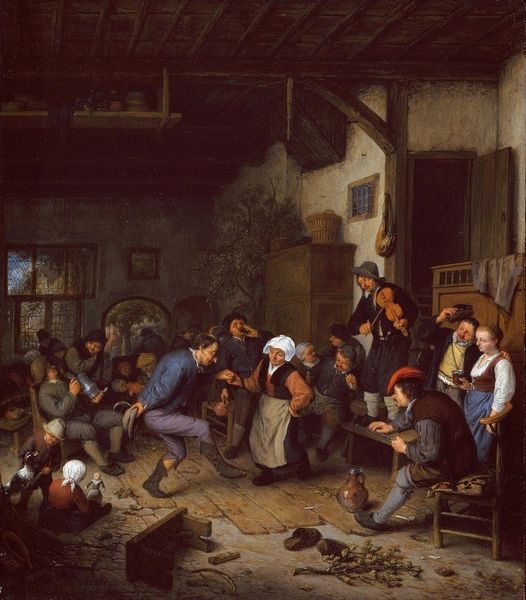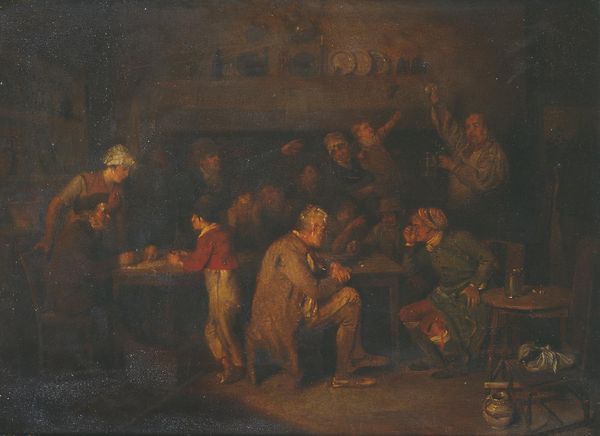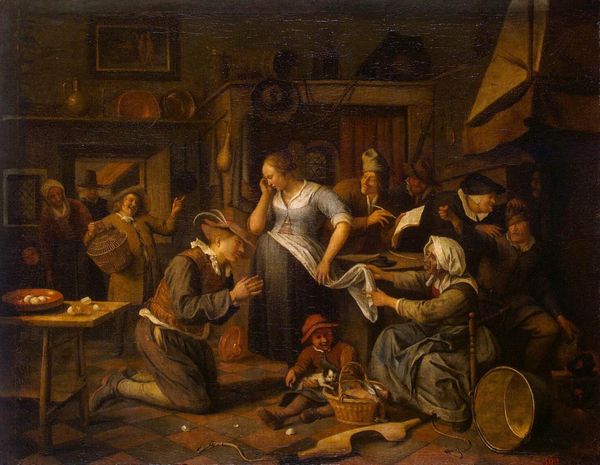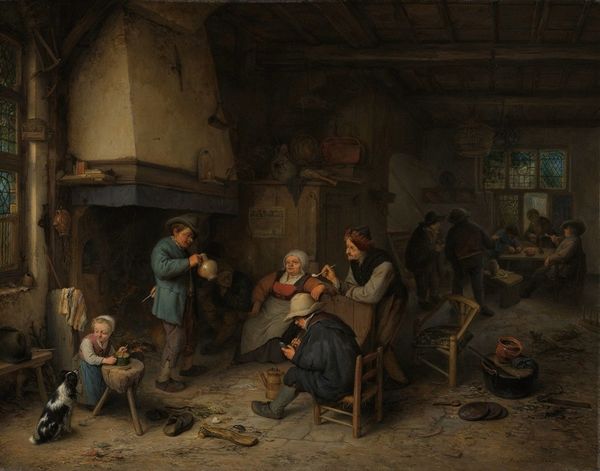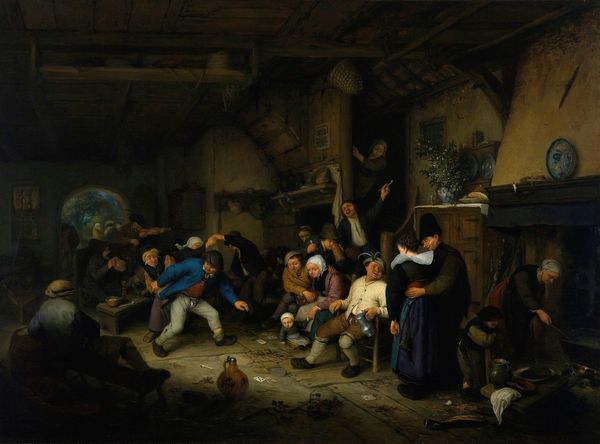
oil-paint
#
figurative
#
narrative-art
#
baroque
#
dutch-golden-age
#
oil-paint
#
figuration
#
oil painting
#
genre-painting
Copyright: Public Domain: Artvee
Curator: It's difficult to look away. My initial impression is of chaotic celebration, like a festival crammed into an inn. Editor: Indeed. What we have here is Jan Steen's "Prince's Day," dating from the 1660s or 70s. It’s an oil painting depicting a raucous celebration, likely commemorating a political event during the Dutch Golden Age. I see evidence of Dutch baroque painting techniques in this genre scene, how does the use of materials influence its mood, in your opinion? Curator: The material elements contribute to its immersive qualities. Notice how Steen’s use of earthy tones creates a sense of warmth, which, when coupled with the animated gestures of the subjects, gives this piece an uplifting exuberance. The darker areas surrounding the main action in this composition allow your attention to fully settle on the celebration in its foreground. But looking closer, it seems like social commentary may be at play. Editor: I agree that Steen's materiality and means of production here support an overall social perspective, a view of Dutch customs centered around this time period, but I still wonder what he is trying to capture about the lives of everyday people? Curator: He offers, perhaps, a sardonic glimpse into Dutch society. The dishevelment, the loud merriment, and maybe even subtle political allegiances are worth probing. It feels very gendered as well, observe where women and children are positioned compared to where men seem to populate, as they gather closely around tables in the scene. Editor: Interesting point about gender, as labor is divided throughout and certain family relations seem to preside throughout. The very material conditions, what it would have meant to secure pigments, stretch the canvas, commission this kind of piece–suggest something of that time’s economy as well. Curator: Absolutely, placing this artwork in the social and political context reveals so much more than just the visual spectacle. The symbolism hidden in these genre paintings reveals stories within stories, of lives led and values upheld or critiqued. Editor: Right, understanding its social-historical contexts allows for a richer interpretation that reveals so much, while a look into process and materials really shows you just how and what that revelation comes to mean!
Comments
rijksmuseum about 2 years ago
⋮
Prince’s Day! This popular feast-day celebrated the birthday (14 November 1650) of Prince William III of Orange-Nassau. How this was done is explained on the piece of paper on the floor in the middle foreground. This translates as: ‘To the health of the Nassau laddie, in one hand a rapier, and in the other a glass raised gladly.’ This is sure to boost spirits; the revellers take no notice of the portrait of the prince ‘overlooking’ the scene.
Join the conversation
Join millions of artists and users on Artera today and experience the ultimate creative platform.
